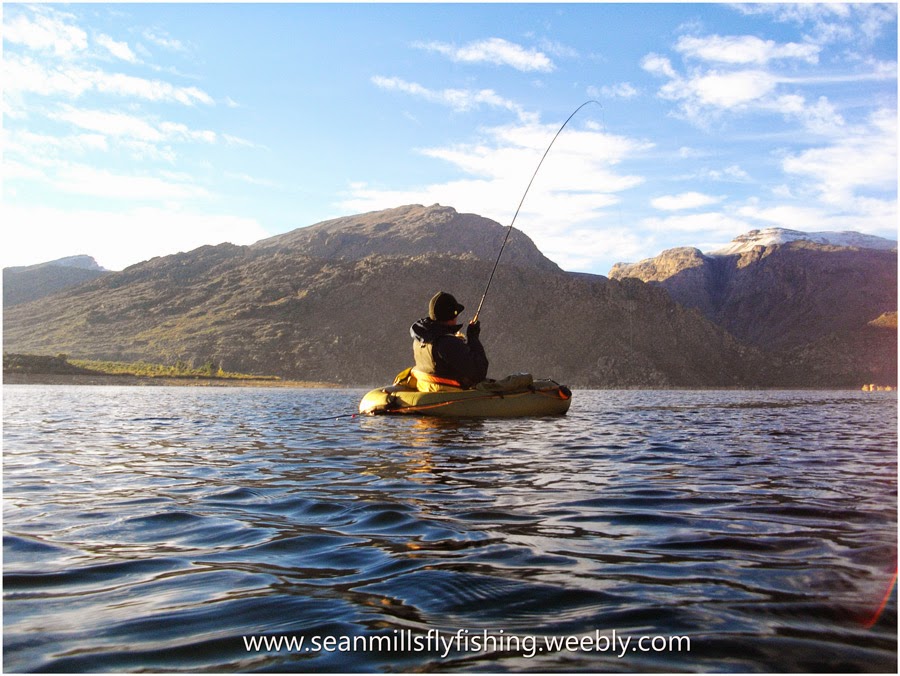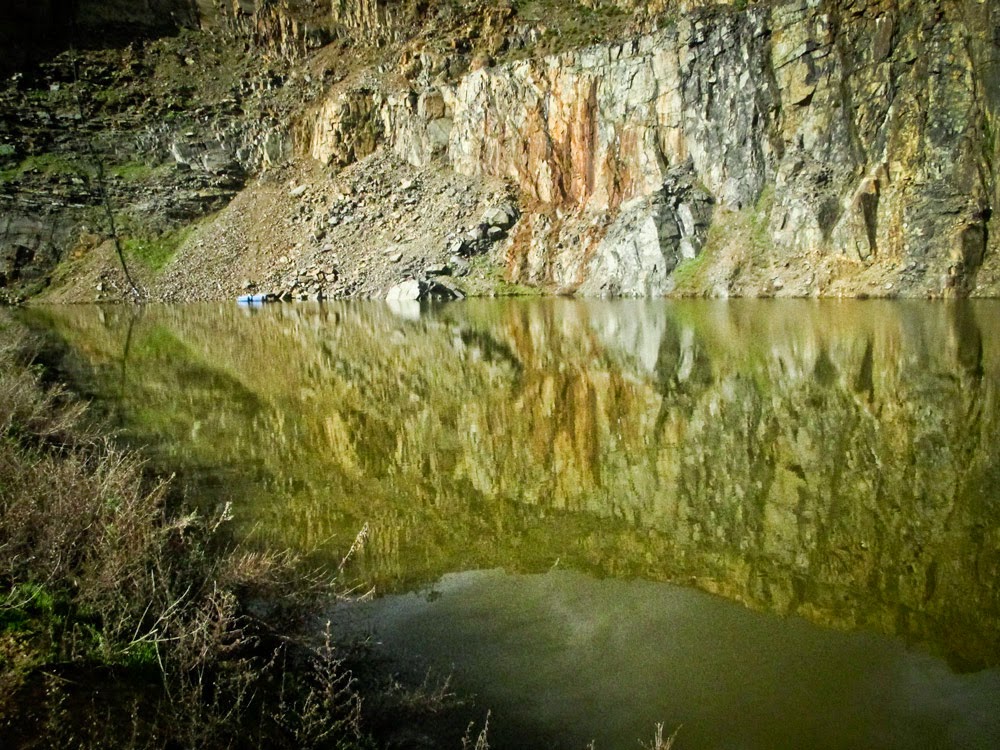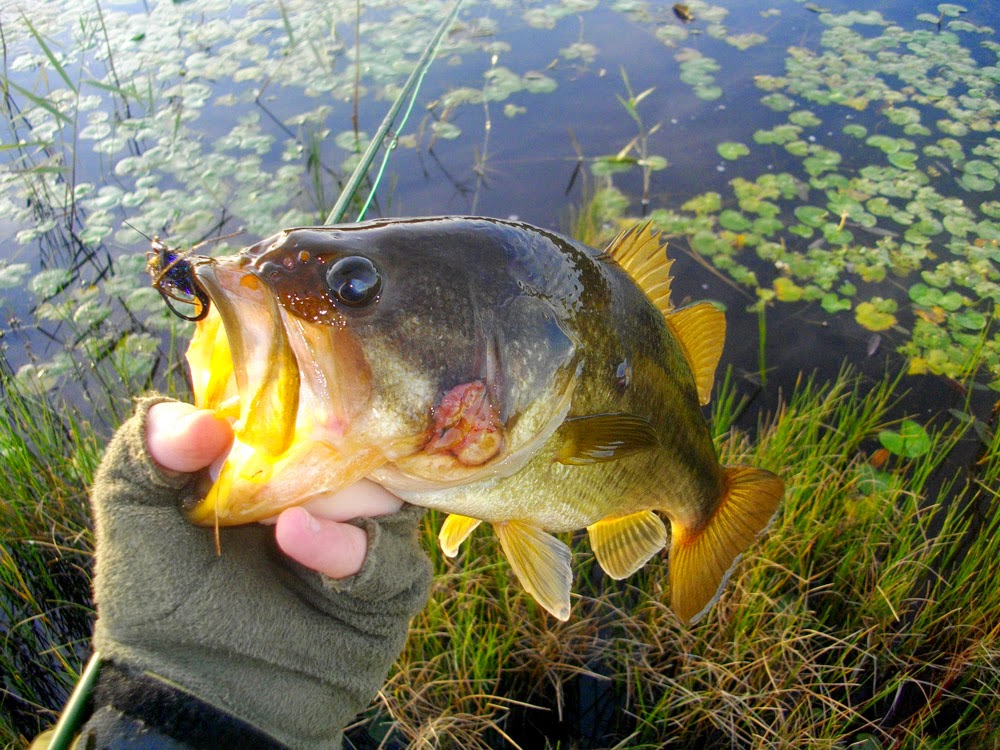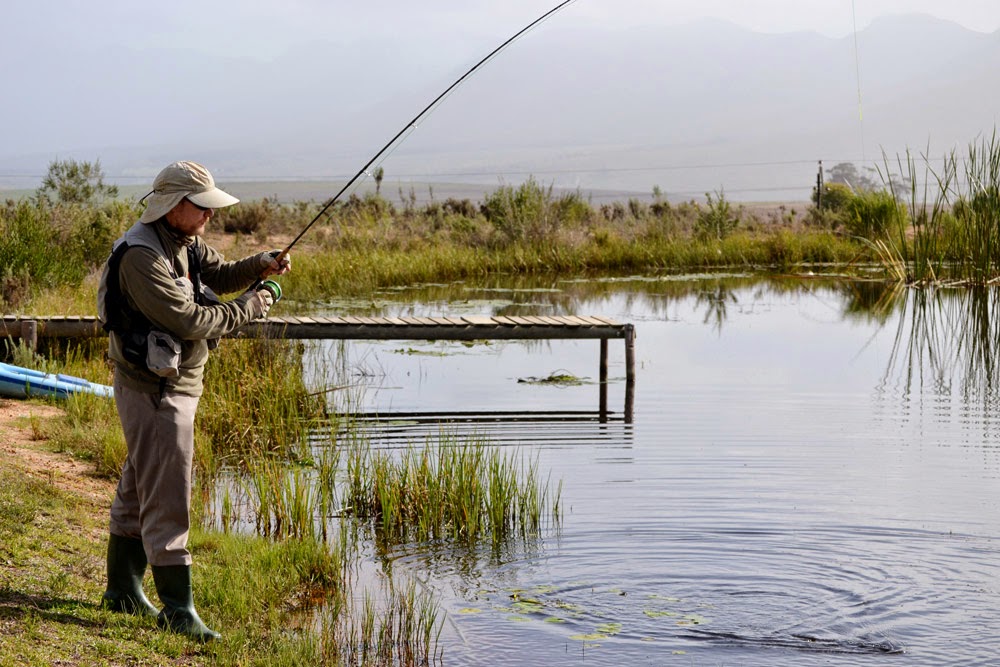One line that I consider to be esential in my fly fishing arsenal is the DI 7 fast sinking line. I use it for everything from still water trout fishing, bass fishing in the winter and sometimes in the summer, stalking sandsharks, fishing in the surf, fishing for snoek and yellowtail and fishing for tigerfish.
Di 7 sinking lines are expensive and so here is a little known secret. I own an 8 weight, 6 weight and 5 weight fly rod and use the same 7 weight Di 7 line on all of them. Fast sinking fly lines are thin in diameter and very dense. You can cast a 5 weight D i 7 line just as easily on a 8 weight rod as you can cast a 7 weight Di 7 on a 5 weight. I first bought the Di7 line for a tigerfish trip in Zambia many years ago. I bought the Airflo version. It is still going and still looks and casts like new. I tried the 7 weight line on my 6 weight rod when I got back from my trip and it just worked and worked well. Then I tried it on my 5 weight and same story. I have even cast it successfully on a 10 weight.
So if you want to buy a Di 7 line, buy a 7 weight and it will work on a wide variety of rods. The same cannot be said for floating fly lines. Always use a line that matches your fly rod rating or a line weight up. For my 5 weight rod I use a 6 weight floating fly line for easy loading at close to medium ranges.
For awesome DVDs and E books by Sean Mills, check out seanmillsflyfishing.weebly.com
Saturday 28 June 2014
Winter carp and bass action at Hillcrest Quarry
 Winter is never an easy time to go fishing
because of the many cold fronts and strange weather that we get down here.
After a few days of rain the weather had stabilized and although partly cloudy,
the air temperature was warm and the wind light. I decided to give Hillcrest
quarry (near Durbanville) a try and promptly drove over to my friend Roland
Oelofse's house to ask if he would like to come with. With everything arranged,
I went home to get ready with the promise that I would pick him up at 1pm.
Winter is never an easy time to go fishing
because of the many cold fronts and strange weather that we get down here.
After a few days of rain the weather had stabilized and although partly cloudy,
the air temperature was warm and the wind light. I decided to give Hillcrest
quarry (near Durbanville) a try and promptly drove over to my friend Roland
Oelofse's house to ask if he would like to come with. With everything arranged,
I went home to get ready with the promise that I would pick him up at 1pm.
The drive to Hillcrest took us about 15
minutes and we drove up to the Restaurant to pay for our permits, only to be
told that we had to pay at the quarry. So off we went up the hill and then down
again. When we got to the quarry, we noticed a bee hive of activity with public
toilets, sound equipment and a Stage being erected. The quarry lake had also
changed since the last time that I had been there. Firstly, it was full to the
brim and secondly, there where ramps installed on one side of the lake and contraptions
for a cable skiing operation...
Amidst the hustle and bustle of the stage
building, we set up our rods after having paid for our permits. As usual the water was a
turquoise blue colour and very clear. The quarry is stocked with trout but also
has a very healthy population of largemouth bass. I was going to sight fish for
them along the steep, rock sides of the quarry, using a floating fly line, long
leader and #8 tungsten beaded black fritz.
After about half an hour of fishing the
fritz along the sides of the quarry to sighted bass that for the most part
where not intent on eating it, I cast the fly out next to a large undercut of
rock and let it sink deep. I could see no bass, but the undercut shouted ambush
spot. I began slowly fishing the backup then I spotted a large, dark shape
coming up to intercept my black fritz. My heart was in my throat, this was the
biggest bass that I had seen in the quarry. It very casually inhaled my fly and
I set the hook twice for good measure.
The bass fought hard in the clear, deep
water making deep lunges and bending my TFO Jim Teeny 5weight rod to the max.
Landing it was also going to be difficult, because I had left my telescopic net
in the car. I made my way down the rocks to a point where I could lean over
enough to lip land the bass. The rock that I was perched on had other loose
rocks on it and sloped at an angle. One
false step and I would be treading water in one of the deepest quarry lakes in
the Cape Province.... This quarry is so deep that if you cast out a full Di 7
sinking fly line and strip backing out and then wait long enough, you will be
stripping the fly line back at your feet, it never gets close to reaching the
bottom... Finally I slipped my thumb and forefinger into the cold lower lip of
the bass and hauled it out carefully. I was ecstatic. It was a big old lunker
bass of about 2kg. After taking a few pictures I released the bass and fished
on.
There were plenty of bass cruising or suspended around the quarry. They
where normally holding about 2 meters down and a few where even taking insects
off the top. I tied on a foam hopper but could not get the bass to commit. I
tried a vartiety of different flies but the bass would follow the fly and then
not eat it. Eventually with the black fritz on again, I caught another smaller
bass.
The bass where mostly small to medium in
size but I spotted another huge bass cruising, but it laughed at my flies. Many
of the bass lakes that I fish in winter are very muddy due to the rain that we
get here in Cape Town. This means that you often can't see how the bass react
in the colder water. Last season I fished a lake in the Bottlery road in the
middle of winter after a week of warm sunny days. The water had cleared up and
the bass where in the shallows and I even managed to catch a few off the top.
But for the most part, winter bass fishing is about using a fast sinking fly
line and two booby flies, very slowly and covering as much water as possible.
Hillcrest with its very clear and deep water was more suited to sited fishing
with a floating fly line and heavily weighted streamers.
After about an hour and a half of fishing I
went to explore the lake above the quarry which is normally very muddy. Low and
behold, as I got closer, I spotted carp feeding and cruising in the corner of
the lake. Now if there is one species of fish that I love catching above all
others on fly, then it has to be carp. The carp where feeding on the bottom
which released vast amounts of silt but there were no feeding bubbles to help
pinpoint where they where feeding.
This made my job much harder. Every now and
then I would spot a tail flapping as the carp rooted on the bottom which
indicated to me where the head was. I had tied on a #8 carp fritz (a fly that I
designed for carp about 10 years ago) , and a foam indicator 2 meters up my
leader to help spot the subtle takes as the carp inhaled the fly.
I tried for about 15 minutes before I
hooked the first one. It was a long and lean carp and it did not take off like
a rocket or get anywhere near backing but the fight was pleasant if not
spectacular. I landed the carp, took a few pics and then decided that I was
going to need my net, so headed back to the car. I spoke the Roland on the way
who was still trying for bass. He was having a tough time getting the bass to
commit, although plenty followed and some even nosed his flies.
Returning to the top lake, I quickly hooked
and landed another carp. There were a lot of carp cruising and feeding off the
surface, some quite close to shore, and so I changed to a white SMS fly in #8
and started stalking them. One carp was heading towards me and about 2 meters
from the side. I cast the fly past the carp and quickly brought it closer. When
it was right next to the fishes mouth, I let the fly sink. The fish swam down
after it and I detected the subtle twitch of the leader and quickly set the
hook. In the end, I landed 6 carp. 3 that where feeding on the bottom, and
three that where cruising and feeding off the top. Roland had managed to land a
nice bass and we packed up at 5Pm.
I must say that I really enjoyed the day
and will be back soon. One little tip that I will leave you with is to use your
car windscreen wiper to hold you fly rod securely. The spring loaded windscreen
wiper arm will securely hold the rod out of the way even if the wind is
blowing...
Please check out my website at
seanmillsflyfishing.weebly.com for E Books and DVDs on fly fishing for carp,
bass, yellowfish and saltwater species...
Sunday 1 June 2014
Trout, bluegill and bass at Vaalvlei (Stanford)
On a recent trip to Vaalvlei, near Stanford (close to
Hermanus) I was able to wet a line after been blown out the first day by
seriously strong winds. The Sunday morning started out crisp and with a
moderate wind blowing. I walked down through the vineyards to the lake and was
greeted by 4 other fly anglers, one of which had managed to land a 16inch trout
on a nymph and some bluegill on dry flies.
I fished for about an hour with no luck, and then changed to
a Di 7 sinking Poly leader and two flies, an orange fritz and a black fritz
with 4mm tungsten bead and blue flash. I caught two trout of about 13 inches
each in quick succession. The fishing was tough and after landing two small
bass and a bluegill ,I headed back to the cottage on the hill after a further 3
hours.
The following morning, I made my way back down to the lakes.
The wind was much calmer and the weather more stable. I caught a beautiful
bluegill sunfish in the first lake on a black fritz fished deep and slow.
Moving onto the main lake, I tried for trout using a sinking
line and boodbies and then a floating line an sinking leader and various
combinations of flies, but no success. I then headed around the lake dipping a
black fritz fly in size 8 with tungsten bead into the gaps between the water
lilies a rod length or two away. The technique is very simple. You dip the fly
in a hole in between the lilies and let it sink to the bottom before giving it
one or two twitches. You then bring it back out and try the next hole.
After
about 20 minutes of doing this I felt a strong tug on the fly and set the hook.
Utter chaos ensued as I tried desperately
to subdue an enraged largemouth bass amongst the densely packed water lilies
and other weed. After a little while I eventually managed to lip land a
beautiful old specimen. After taking a few pictures I continued on using the
same technique. About 5 minutes later and I hooked into a 14 inch trout amongst
the lilies which was a big, welcome surprise.
After no more success, I switched tactics and tied on an elk
hair caddis in #14 with a brassie nymph tied underneath (new Zealand style). I
fished this off one of the jetties casting towards rising trout. A little while
later and I was rewarded with a nice feisty trout taken on the nymph.
The sun was rising now and I had spotted some trout rising
close to the lilies around the lake. One of them was going berserk. I cut off
the trailing nymph and started casting the dry fly at the rising trout. By now the
fish was rising a meter away from the side. I recast the dry close to a fresh
rise and the trout turned on the dry and inhaled it. I set the hook and was
rewarded with a 14 inch rainbow for my efforts.
The trout where now cruising 2 to 3 meters away from the
edge between the weed and water lilies on one side and the heavier weed a bit
deeper out. This was exciting fishing, spotting a rising trout and trying to
intercept it with the elk hair caddis. I had a few near misses as the trout
swirled on the fly but refused it. But perseverance paid off and I landed a few
more trout on the dry flies.
By this time My wife Dee had joined me and she
took some pics of the action with our DSLR and 55 to 200mm lens. The biggest was 16 inches and in good
condition.
I used a 9foot 5weight TFO Jim Teeny rod for the trip.
For more info on the venue check out www.vaalvlei.co.za
My DVD “The ultimate guide to starting fly fishing” was shot
at this venue and can be ordered here… http://seanmillsflyfishing.weebly.com/dvds.html
Subscribe to:
Posts (Atom)



















